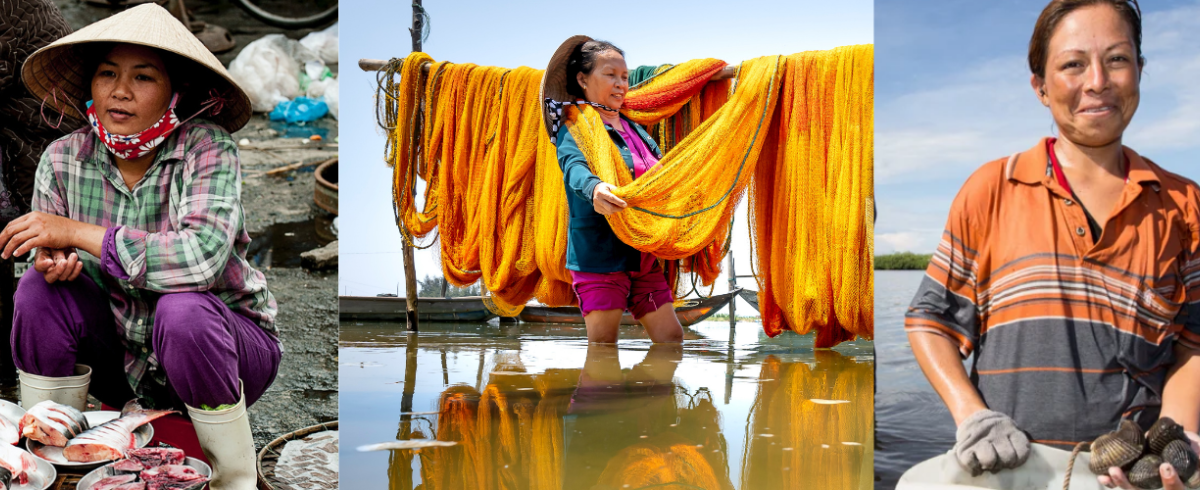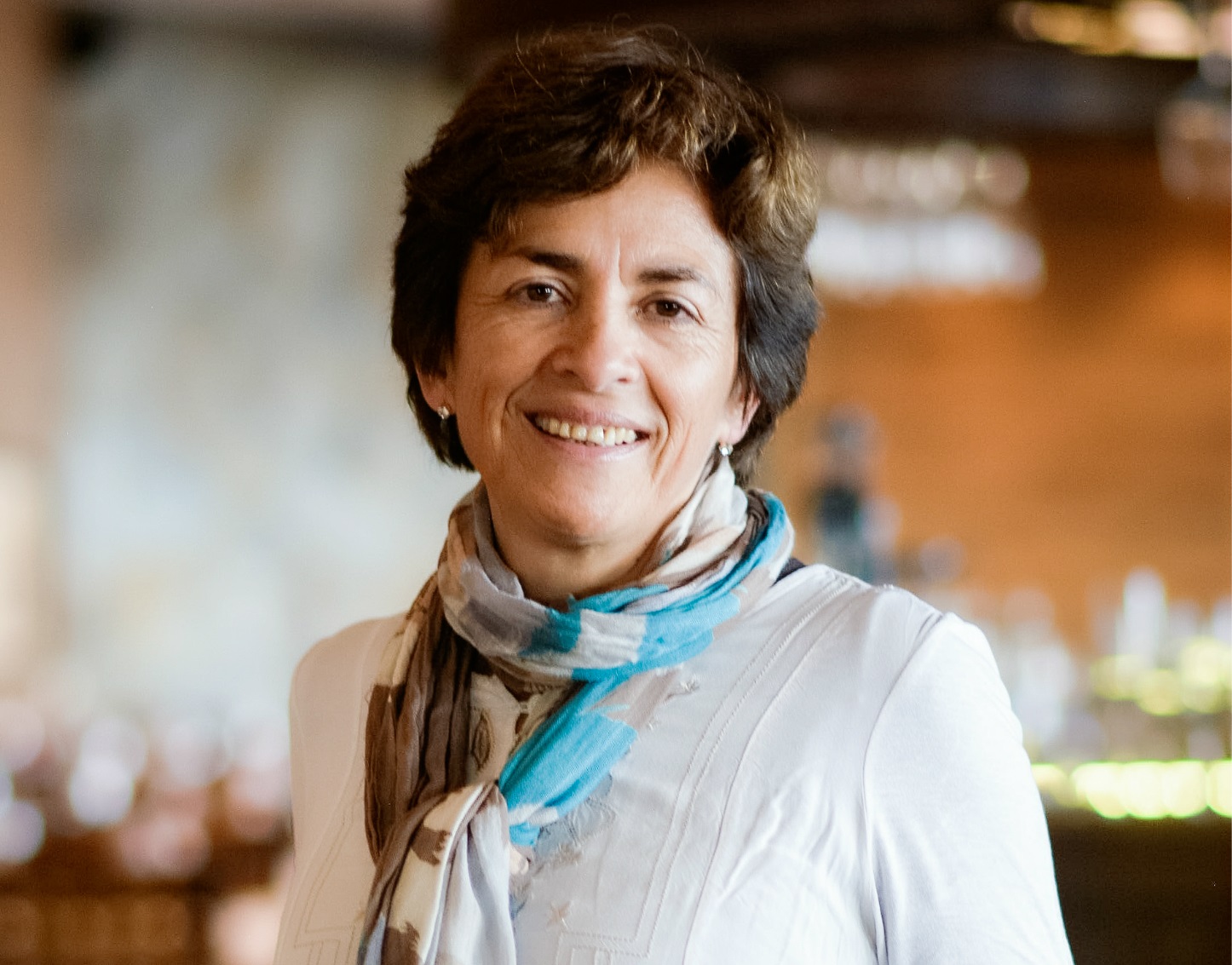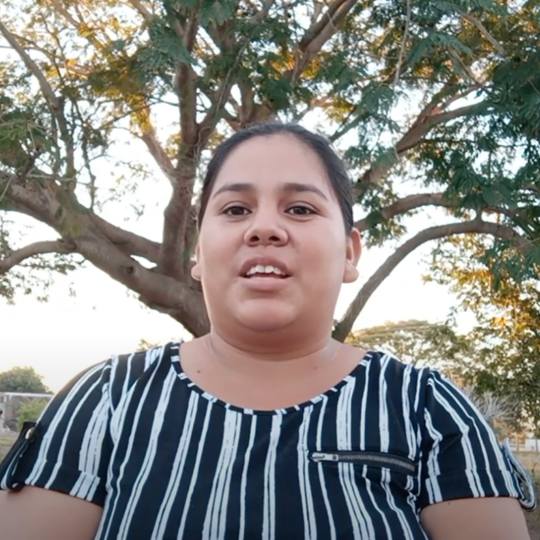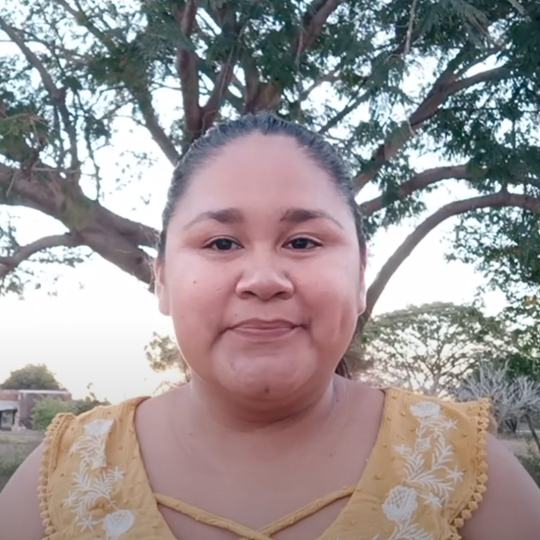
Women in Small-Scale Fisheries
March 2022
Over 56 million women worldwide contribute to small-scale fishing, but their contributions are often overlooked and un(der)recognized by local and national governments, policy-makers and community officials.
This month’s SSF Highlight features women working in, and with, small-scale fisheries in Chile and Mexico and spotlights the importance of women and their contributions to small-scale fisheries around the world.
Cecilia Godoy

Cecilia Godoy is the founding member and current president of Fundacíon Bordemar and has over 25 years of experience working with artisanal and indigenous coastal communities, fishermen and shoreline collector organizations, and municipalities and research centers. She has served as an advisor on projects on gender issues, marine resources and territorial planning.
Read Cecilia's responses about the role of women and their contributions to food security and nutrition and the health and well-being of their communities as well as the challenges they face.
What are the role that women play in your community's fisheries? How do they contribute to food security and nutrition?
Today, the role of women as producers of food and sustainable use of marine-coastal biodiversity is undeniable, contributing to the culture of Bordemar for generations by maintaining traditional knowledge, collaborating with more sustainable innovations and conserving the ecosystems of which they are a part of.
What other ways do women contribute to the health and well-being of your community? Do women engage in other forms of alternative livelihoods related to fisheries?
Their contribution to reducing vulnerability to climate change is recognized by their peers by developing various activities, such as special interest tourism and adding value to the production chain, thereby increasing their capacity, and that of their communities, to adapt. Although, women do not usually carry out activities on boats, they have assumed key functions on land, such as the provision of inputs, extraction and cultivation, primary and secondary processing, and marketing.
What are some the challenges they face?
These unskilled secondary jobs are poorly paid and still remain invisible, hence the challenge of establishing gender equity criteria in the integration of various fisheries and aquaculture organizations that establish guaranteed minimum rights for women seafarers, their activities, and their contribution to the social cohesion of their communities.
Learn more about Cecilia and her work here.
Priscilla Castañeda and Sheila Romero
Priscilla Castañeda and Sheila Romero are employed by a cooperative that collaborates with SmartFish AC on a value rescue project and fishery improvement project (FIP) managed by Pronatura Noroeste. SmartFish AC supported the cooperative to build a small-scale processing facility and trained women from the community to operate the plant and the digital traceability system.
Watch these two videos to learn more about Priscilla and Sheila's experiences working in the shrimp and snook processing plant and participation in this project.
Priscilla Castañeda |
Sheila Romero |
|---|---|
|
Image

|
Image

|
SmartFish AC’s value rescue refers to the deliberate harnessing of profits generated from business-related innovations and improvements for the betterment of environmental and social sustainability. The model contributes to fostering sustainable fisheries and sustainable development in accordance with FAO’s Voluntary Guidelines for Securing Sustainable Small-Scale Fisheries (SSF Guidelines). The end goal of the value rescue process is to develop small-scale fisheries that deliver high-quality, food safety certified seafood that is independently verifiable as environmentally sustainable and socially responsible. Value rescue extends typical value addition in three ways:
- Adding and recovering value: beyond simple value addition, value rescue includes recuperating value that is otherwise lost by improving production (catch, handling processing, cold chain, and transport, thereby improving product quality) and business practices (administration, production costs, planning, marketing, logistics, etc).
- Retaining value: value rescue includes increasing the proportion of value retained by fishers (through a combination of enterprise development and disintermediation)
- Incentivizing improvement: additional value added, recovered, and retained is deliberately harnessed to finance improvement of fisheries’ environmental and social performance.
Thank you to Layla Osman, Senior Consultant at EDF Chile and SmartFish AC for their contributions to this month's SSF Highlight.
Share your experiences and challenges as part of the SSF Hub Dialogues: Women in Small-Scale Fisheries and join the SSF Hub on March 22 to hear from women fishers and fishing organization representatives in Bangladesh, Sri Lanka and Thailand on their contributions and involvement in small-scale fisheries.
Event details can be found here.
This article is part of the SSF Highlights series of articles published regularly to the SSF Hub. To read previous SSF Highlights, follow this link.
